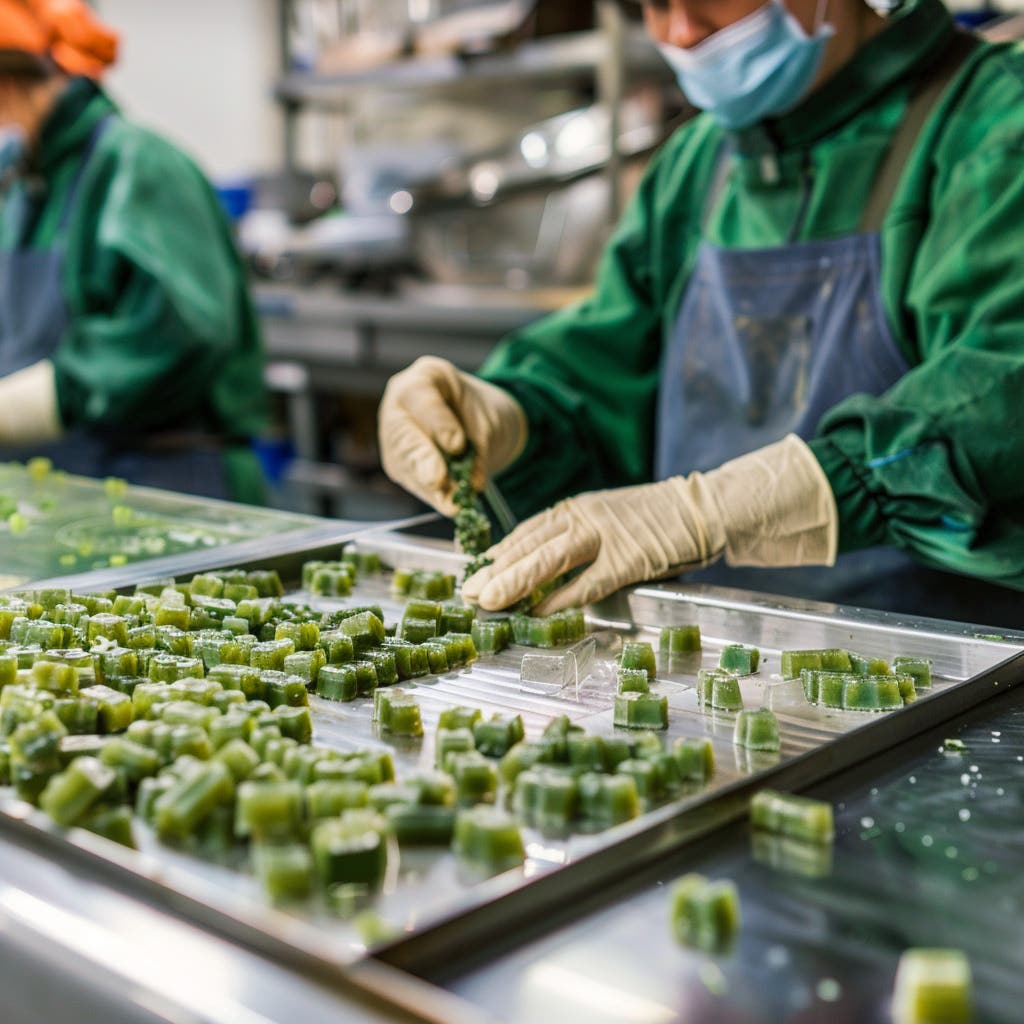Hemp Seed Germination
-
Seed Selection: Start with high-quality hemp seeds from reputable sources. Choose seeds that are genetically stable, viable, and suited to your specific growing conditions and desired outcomes.
-
Pre-Soaking: Some growers prefer to pre-soak hemp seeds before planting. To do this, place the seeds in a container with filtered water and let them soak for 12 to 24 hours. This can help accelerate the germination process.
-
Germination Medium: Use a suitable germination medium such as sterile soil, peat pellets, or rockwool cubes. Ensure the medium is moist but not overly saturated, as excessive moisture can lead to rot.
-
Planting Depth: Plant the pre-soaked or dry seeds at a shallow depth, approximately 0.5 to 1 inch deep, depending on the seed size. Cover the seeds lightly with the germination medium to provide adequate protection and moisture retention.
-
Temperature and Humidity: Maintain a consistent temperature range of 70 to 80°F (21 to 27°C) and a relative humidity level of around 70% to create optimal conditions for germination. Consider using a seedling heat mat or a controlled germination chamber to regulate temperature.
-
Lighting: While hemp seeds can germinate in darkness, providing them with gentle, indirect light can help stimulate growth. Place seed trays near a window or use fluorescent grow lights to provide consistent, low-intensity illumination.
-
Patience and Monitoring: Germination can take anywhere from 3 to 10 days, depending on the variety and growing conditions. Regularly check the moisture level of the germination medium and monitor seedlings for signs of growth and health.
Hemp Transplanting
-
Timing: Transplant hemp seedlings when they have developed a strong root system and have at least two to four sets of true leaves. This usually occurs around 3 to 4 weeks after germination. Avoid transplanting seedlings too early to prevent stress and ensure they are robust enough to handle the transition.
-
Hardening Off: Before transplanting, gradually acclimate seedlings to outdoor conditions through a process called "hardening off." Expose them to increasing amounts of sunlight and outdoor elements over the course of several days to strengthen their tolerance to the environment.
-
Site Preparation: Prepare the transplanting site by clearing weeds, loosening the soil, and incorporating organic matter or compost to improve soil fertility and drainage. Ensure the site offers adequate sunlight, proper airflow, and sufficient space for the plants to grow.
-
Transplanting Technique: Dig holes slightly larger than the root ball of each seedling. Gently remove the seedlings from their containers, being careful not to damage the roots, and place them into the prepared holes. Backfill the holes with soil, lightly firming the soil around the base of each plant.
-
Watering and Fertilization: After transplanting, water the seedlings thoroughly to help them establish in their new location. Avoid overwatering, which can lead to root rot. If needed, apply a balanced, slow-release fertilizer to provide essential nutrients for healthy growth.
-
Mulching: Consider applying a layer of organic mulch around the base of each plant to conserve moisture, suppress weed growth, and maintain more consistent soil temperatures.
-
Post-Transplant Care: Monitor the transplanted hemp seedlings closely during the initial days to ensure they are adapting well. Provide adequate water, protection from extreme weather conditions, and timely pest management.
Following best practices for hemp seed germination and transplanting is crucial for establishing healthy, vigorous plants and optimizing yield potential. By carefully selecting high-quality seeds, providing optimal conditions for germination, and practicing proper transplanting techniques, hemp growers can set their crops on a path to success. Remember to monitor the plants, provide necessary care, and adapt your practices as needed to ensure the ongoing health and productivity of your hemp crop.
















